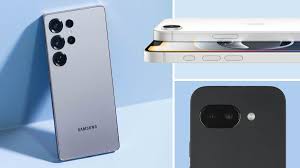It’s a familiar frustration: your phone, once lightning fast, now takes forever to open apps, scroll through social media, or even make a simple call. Before you rush to buy a brand-new device, take a deep breath. Most phones slow down over time, and in many cases, there are simple fixes that can restore speed and efficiency without spending a dime. Let’s break down why phones slow down and what practical steps you can take to speed them up.
Why Phones Slow Down Over Time
Several factors contribute to a phone losing its speed. Understanding these reasons will help you identify which fixes might work best.
1. Too Many Apps Running in the Background
Even when you’re not actively using them, many apps continue running in the background. Social media, messaging apps, and games constantly refresh content, which consumes memory and slows your phone.
2. Full Storage
Phones, like computers, need free space to operate smoothly. When storage is nearly full, your phone struggles to read and write data quickly, causing delays in opening apps or switching between tasks.
3. Outdated Software
Phone manufacturers regularly release updates to improve performance and security. If you avoid updating your phone, it may struggle with newer apps or features designed for updated systems.
4. Battery Health
As batteries age, phones can automatically reduce performance to prevent unexpected shutdowns. If your phone feels sluggish, the battery might be part of the problem.
5. Cluttered Cache and Data
Apps store temporary data called cache to help them run faster. Over time, cached data accumulates and can take up valuable storage, ironically slowing your phone down.
6. Too Many Widgets and Animations
Fancy live wallpapers, widgets, and animations can look appealing but consume memory and processing power, contributing to lag.
7. Malware or Unwanted Apps
While less common than on computers, phones can also be affected by malware or apps that constantly run in the background, consuming resources without your knowledge.
How to Fix a Slow Phone Without Buying a New One
Now that we understand why phones slow down, let’s look at practical, non-technical ways to speed them up. These steps are simple, safe, and effective for most users.
1. Restart Your Phone Regularly
It might sound obvious, but restarting your phone clears temporary files, resets memory usage, and closes apps running in the background. Try restarting at least once a week for better performance.
2. Uninstall Unused Apps
Go through your apps and remove anything you no longer use. Many apps run background processes or send notifications, which can slow your phone. Even a few minutes of cleanup can make a noticeable difference.
Tip: Check app permissions and background activity in your settings to identify apps that drain resources even if you don’t open them often.
3. Clear Cache and Temporary Files
Clearing cached data can free up storage and improve speed. On most phones:
- Android: Go to Settings > Storage > Cached data and clear it.
- iPhone: Offload unused apps via Settings > General > iPhone Storage or clear app cache individually.
4. Free Up Storage
Delete old photos, videos, or files you no longer need, or move them to cloud storage like Google Drive, iCloud, or Dropbox. Keeping at least 10–20% of your storage free helps your phone run smoothly.
5. Update Your Software
Ensure your phone’s operating system and apps are up-to-date. Updates often include performance improvements and bug fixes that can make your device faster.
6. Limit Background Apps and Notifications
On both Android and iPhone, you can restrict background activity:
- Android: Settings > Apps > [Select App] > Battery > Background restriction.
- iPhone: Settings > General > Background App Refresh > Turn off for apps you rarely use.
Additionally, reduce push notifications for apps that aren’t important.
7. Reduce Animations and Visual Effects
Animations look nice but can slow down older phones. Reducing or disabling them can improve speed:
- Android: Enable Developer Options and turn on “Remove animations.”
- iPhone: Settings > Accessibility > Motion > Reduce Motion.
8. Check for Malware or Unwanted Apps
Install a trusted mobile security app and run a scan. Remove suspicious apps or files that may be slowing down your phone.
9. Reset Your Phone as a Last Resort
If your phone is still sluggish after trying everything else, a factory reset can bring it back to near-new performance. Important: Backup your data first!
- Android: Settings > System > Reset > Factory Data Reset
- iPhone: Settings > General > Reset > Erase All Content and Settings
This removes all apps, files, and settings, essentially giving your phone a fresh start.
Extra Tips for Keeping Your Phone Fast
- Use lightweight apps: Many apps have “Lite” versions (Facebook Lite, Messenger Lite) that use less memory.
- Avoid live wallpapers and excessive widgets: Stick to static wallpapers and only essential widgets.
- Monitor battery health: Replace your battery if it’s degraded. A new battery can restore speed on older phones.
- Restart before installing major apps or updates: This ensures your phone has enough free memory for smooth installation.
Conclusion
Sluggish phones aren’t necessarily a sign that it’s time to upgrade. Most slowdowns happen due to app clutter, storage issues, or software inefficiencies—problems that can be fixed at home with a bit of attention. By clearing cache, uninstalling unused apps, updating software, and managing storage, you can restore much of your phone’s original speed.
With these tips, you can extend the life of your phone, avoid unnecessary spending, and enjoy a faster, smoother experience—without ever stepping into a store for a new device.
